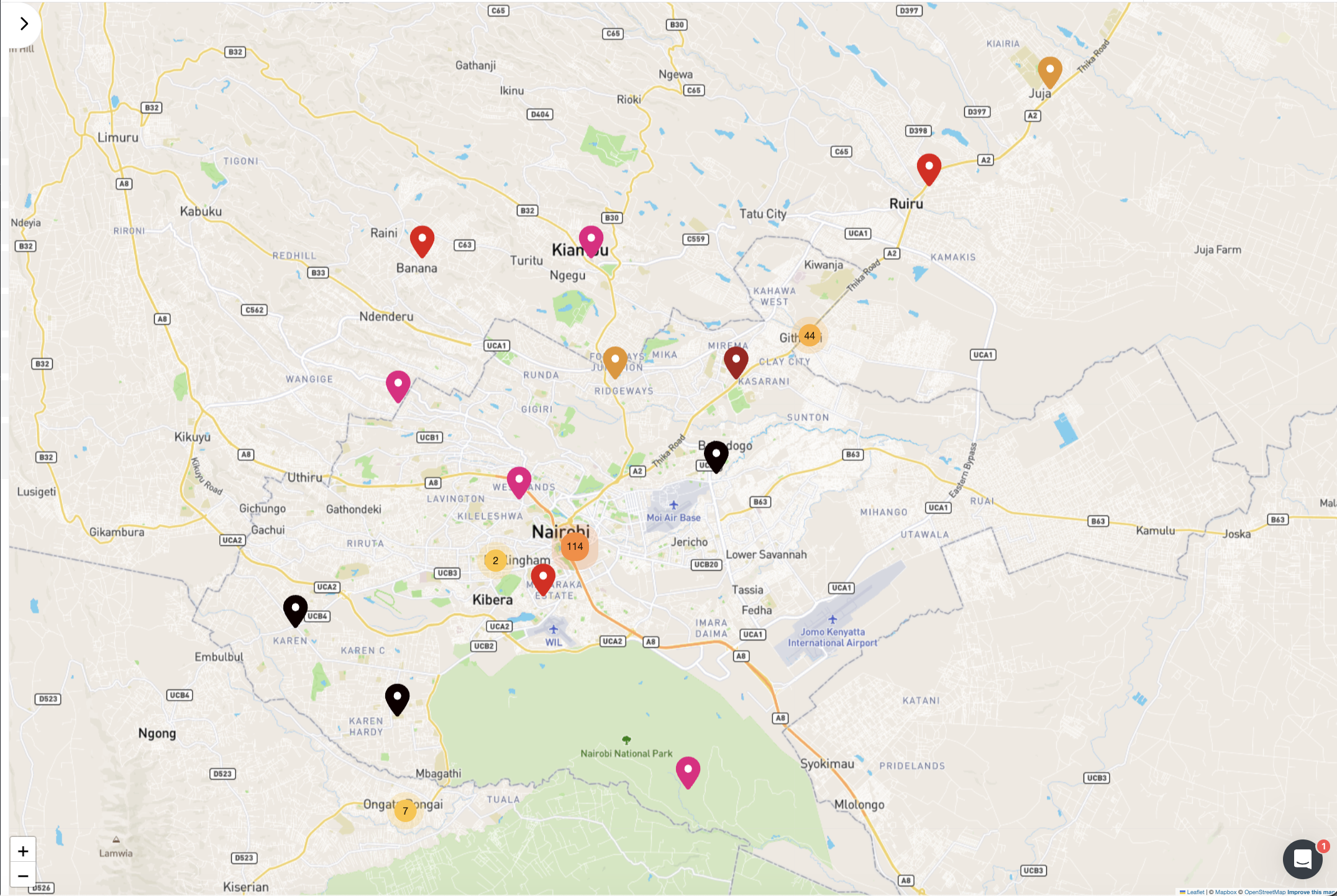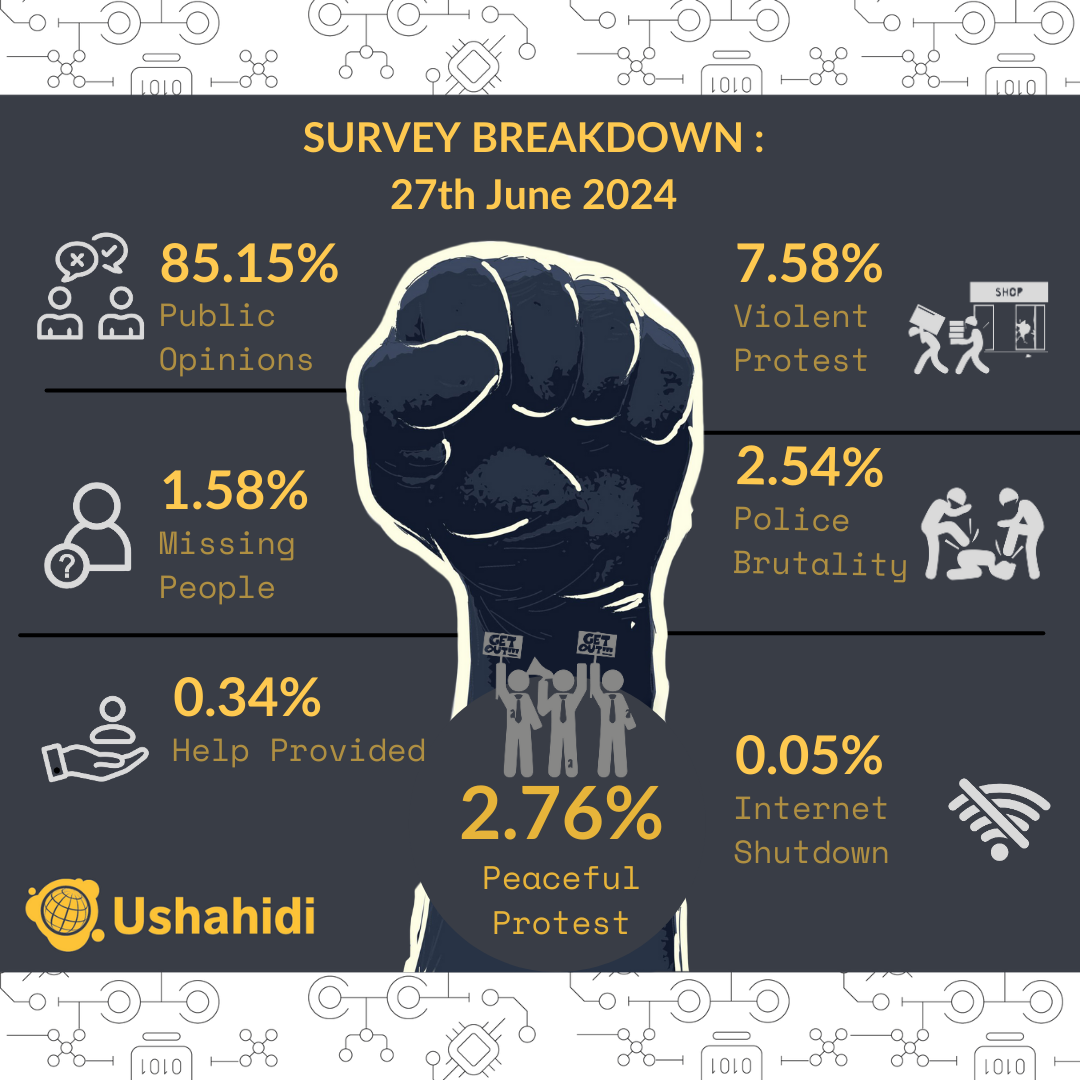Situational Report #1: An analysis from the peak of protests in Kenya on 25th and 27th June

Jul 3, 2024

Overview
This report provides an account of the protests in Kenya on Tuesday, June 25th, and Thursday, June 27th, against the newly proposed Finance Bill 2024. The protests were part of a broader wave of dissent reflecting public discontent with the bill’s provisions, particularly increased taxes on essential goods and services. The youth, mainly Gen Zs, took to the streets in large numbers in an attempt to make their voices heard.
Events on Tuesday, 25th June
Status of the Protests
- Location
The protests took place in all the major cities in Kenya i.e. Nairobi, Mombasa, Kisumu, Nakuru, and Eldoret. Other towns such as Meru, Embu, Machakos, Lodwar, Kajiado, Nanyuki, Nyahururu, Kisii, Kiambu, Nandi, Kakamega, Narok, and Siaya, were also affected with others experiencing more than one protest in their towns.
- Scale
The protests attracted a large number of young people across all the major cities, with Nairobi leading with a significantly high turnout.
- Nature
The Tuesday protest was dubbed the “mother of all protests”. The protests were mostly peaceful, with demonstrators chanting slogans and carrying placards opposing the Finance Bill. However, the response by police was termed as excessive and resulted in injuries and deaths of unarmed protestors across the country. In Nairobi, a clash occurred near the Parliament building when police used tear gas to disperse protestors attempting to breach security barriers. Some protesters breached the security and gained entry into the Parliament building. Several protestors sustained injuries while others were shot dead when police opened fire. The Tuesday incidents led to a public outcry of human rights violations by the police.
Events on Thursday, 27th June
Status of the Protests
- Location
The protests took place in almost every major town in Kenya.
- Scale
The scale was lower than during the Tuesday protests. This can be attributed to the president's concession of withdrawing the Finance Bill 2024 and the violent aftermath of June 25th.
- Nature
In the Thursday protests, the discussion shifted from the Finance Bill to governance, the rule of law, and the state of the country. The youth demanded a total overhaul of the country’s politics and pertinent policy issues. Even though the Finance Bill was dropped and a section of the political class called on the youth to stop the demonstrations, they were adamant about going to the streets.
The Ushahidi team set up an internal instance of our open-source platform to help with social listening on social media mainly X (formerly Twitter) where citizens shared their displeasure about the finance bill, while also keeping track of missing persons allegedly abducted by security forces, incidences of police brutality, and help being provided by various human rights, legal and medical agencies.
 Image: A map view of the reports documented on the Ushahidi Platform
Image: A map view of the reports documented on the Ushahidi Platform
The deployment pulled in 159,205 organic tweets on 25th June and 58,151 on 27th June. We PURPOSELY ignored retweets and analyzed UNIQUE tweets only. Ushahidi has classified and categorized these reports using Artificial Intelligence Models that have so far achieved 75% accuracy. These AI models, which build on work we've done in collaboration with Dataminr, and additional support from Qhala, have made it easier to categorise a large volume data faster than before on Ushahidi instances. Building on the work we did with Dataminr, the classification of the reports has yielded some interesting findings below.
On 25th June, public sentiment was prevalent, with 70.6% expressing opinions on protests and the government. Additionally, other reports analyzed indicated: peaceful protests at 10%, missing persons at 9.4%, violent protests at 6.1%, police brutality at 2.5%, assistance provided at 1.0%, and internet shutdowns at 0.4%.

On June 27th, public opinion remained prominent, with 85.15% expressing views on protests and the government. Other submissions included reports of violent protests at 7.58%, peaceful protests at 2.76%, police brutality at 2.54%, missing persons at 1.58%, assistance provided at 0.34%, and internet shutdowns at 0.05%

Classification of reports is still ongoing, and the Ushahidi team will strive to share daily updates of what we’re learning from data collected on the platform.